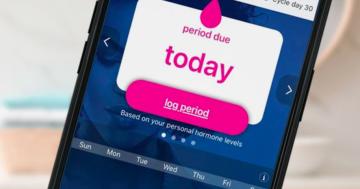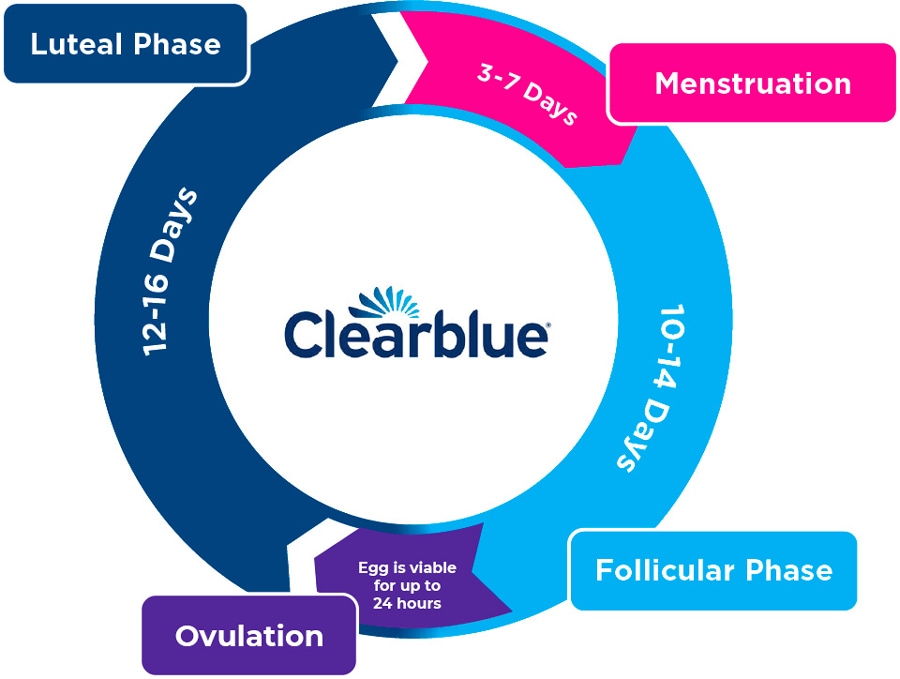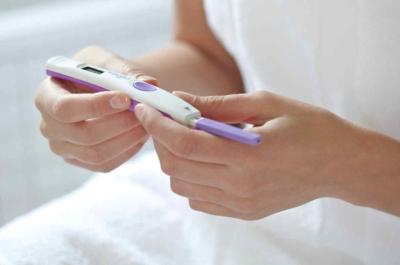Why you should start tracking your period

When you take the time to track your cycle — the day your period starts and ends, the dates you are ovulating, and how long your cycle is each month – you have more useful information than you might realize. Here we explore the reasons period trackers can be helpful whether you’re trying to get pregnant or not, as well as an exciting new app that can make tracking your cycle more personalized and easy.
In this article
Four benefits of tracking your period
1. It establishes a timeline of your menstrual cycle.
Most women do not have a 28-day menstrual cycle every month. In a 2020 study, 52.3% of women sampled had cycle lengths that varied by five or more days, and fewer than 1% of women had the same cycle length across four consecutive cycles.1 A lot happens within a single menstrual cycle. Here’s a brief breakdown of what typically happens when:

So, how long is a menstrual cycle — specifically your menstrual cycle? It’s not the same for everyone, nor is it the same from cycle to cycle. You may be surprised to realize that although your typical menstrual cycle length is within what is considered “regular”, it’s not all that regular. Tracking your cycle is also useful if you are trying for a baby, as it can help you know when to take an ovulation test to predict your fertile days or when to take a pregnancy test.
2. It can help identify when you’re ovulating.
Knowing when you ovulate is important, whether you want to get pregnant or not. Although an egg only lives for up to 24 hours, your fertile window includes both the lifetime of the sperm (up to five days in your body after sex) and the egg — typically a total of about six days.
Your body may give you clues about whether you are currently ovulating or are about to start:
- Leading up to ovulation, your cervical mucus becomes clear and slippery, with a consistency akin to egg whites.
- During ovulation, you may feel a twinge of one-sided pain, described as sharp or cramping.
- After ovulation, basal body temperature (also known as resting body temperature — the moment you wake up and before you get out of bed) slightly rises.
By taking your basal temperature daily, tracking your menstrual cycle and making notes of how your body physically feels each day, you can, with time, see patterns that can help you better identify the day you’re likely to ovulate.
The most accurate way to identify your most fertile days is by taking an ovulation test. However, to use ovulation tests, you need to know your average cycle length and the day your last period started. Tracking your period for several cycles prior to using an ovulation test will help you work out when to start testing.
3. You’ll be better prepared.
Hormone-based period predictions can help you plan with confidence. Tracking your period is helpful for event planning and preparing yourself physically, mentally and emotionally for premenstrual syndrome (PMS). For example, if you often experience headaches or cramping with PMS, you can make sure you have medicine on hand. If you tend to experience fatigue, you can allow for more sleep in your schedule. And if you crave certain foods during PMS, you can stock your pantry with your favorite sweet and salty snacks.
Knowing the details of your cycle is also hugely beneficial when it comes to planning vacations and other milestone events. At the very least, you can pack the right supplies (pads, tampons, etc.) when you know you’re going to need them.
4. It can alert you to potential health problems.
Charting the symptoms you experience throughout your cycle month over month can provide you and your healthcare provider with a wealth of information. The data you collect can help you pinpoint potential triggers of your symptoms and could assist your doctor in diagnosing conditions such as PMS and menstrual migraine.
And depending on how detailed your tracking is, you may also notice variations in patterns. For example, maybe your period has lasted longer or has been much heavier in recent months, and you have the data to prove it. Or maybe your menstrual cycle lengths are getting longer, which can indicate perimenopause, for example. Only your healthcare provider can provide a diagnosis, but having details on paper or in an app is much more reliable than fuzzy memories.
How to track your period
Tracking your period can be as simple as writing everything down on a notepad or using the Notes section of your smartphone. However, digital reminders, calendars and prompts can help keep your tracking info up-to-date and well-organized.
Knowledge is power, and nothing could ring truer when it comes to your reproductive health. By tracking your period, a world of information becomes available to you and with it, innovative ways to better manage this important aspect of your life.
Disclaimers and Sources
- Soumpasis, I., Grace, B., Johnson, S., (April 16, 2020). “Real-life insights on menstrual cycles and ovulation using big data,” Human Reproduction Open, 2020(2), hoaa011, https://doi.org/10.1093/hropen/hoaa011.
- 99% accurate at detecting 25 mIU/ml LH.




